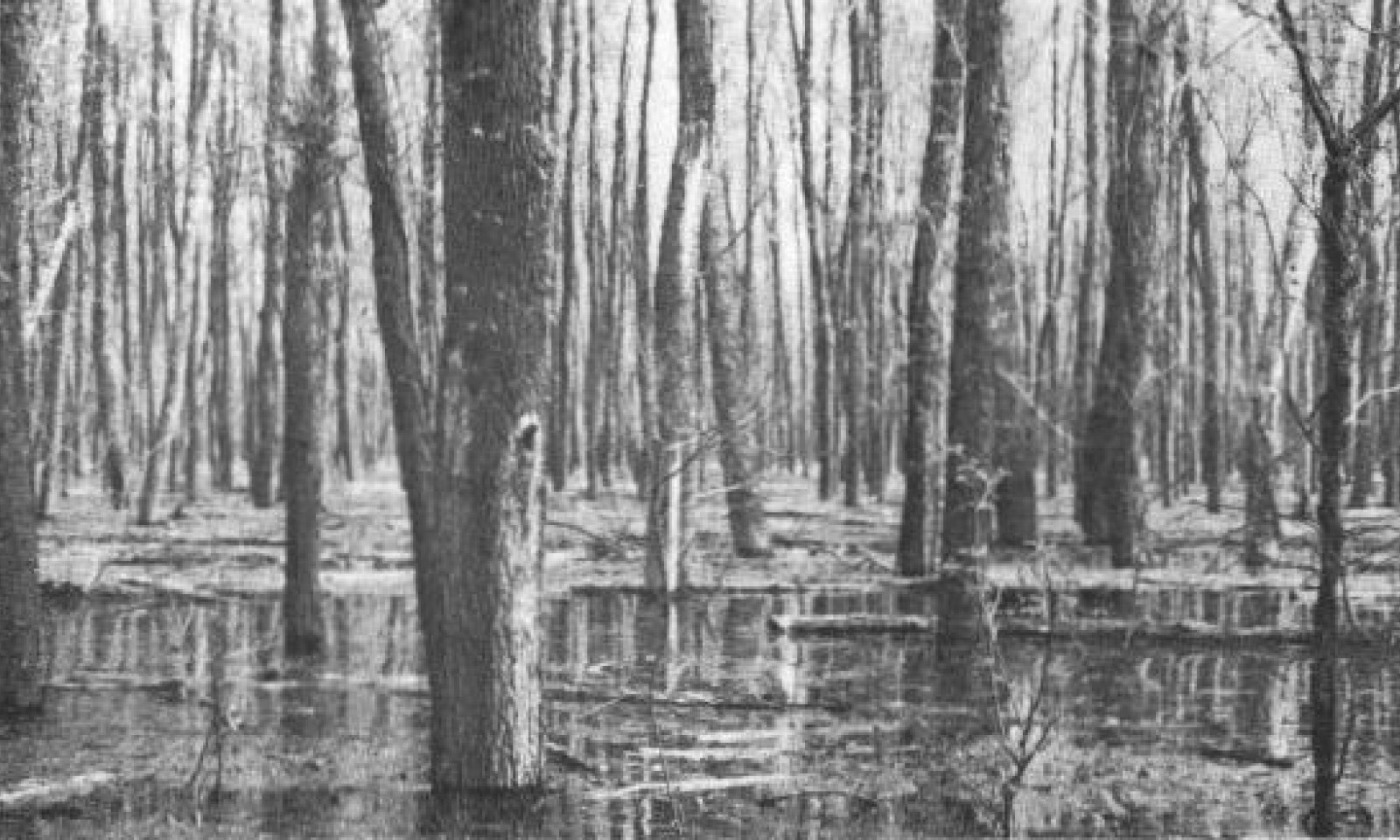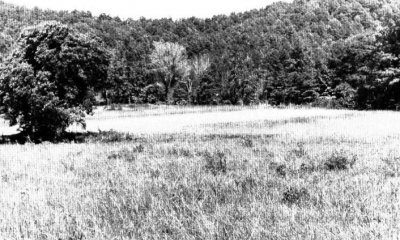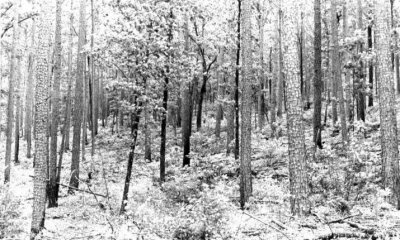
Loamy Wet Bottomland
Scenario model
Current ecosystem state
Select a state
Management practices/drivers
Select a transition or restoration pathway
- Transition T1A More details
- Transition T1B More details
- Transition T2A More details
- Restoration pathway R3A More details
- Transition T3A More details
-
No transition or restoration pathway between the selected states has been described
Target ecosystem state
Select a state
Description
The reference state for this ecological site is an old growth bottomland forest. Historically, loamy wet bottomland forests in the Ouachita Mountains were on relatively stable floodplain positions that flooded every 3 to 5 years. The understory was complex, with multiple layers of shade-tolerant species. A highly diverse ground flora was also present.
Drivers- Flooding frequency, parasitism, fire, wind storms, and wildlife grazing or browsing.
Feedbacks- Flooding submerges this site periodically, creating conditions that favor some species while harming others (Kroschel, 2016). Flooding allows seed dispersal and germination to occur (Hugo, 2014). Tree species variety, as well as sun exposure are also factors to consider when evaluating feedbacks in this state.
Controlling Variable- Soil and climate.
Submodel
Description
The pasture state consists of introduced grass species that were planted to maximize livestock forage production. Species depend on management objectives. Numerous species of warm season, cool season, native and non-native grasses may be utilized on these sites. Forbs and legumes may be added to improve pasture quality.
Drivers- Mechanical soil disturbance and seed planting, water drainage, fire intensity and frequency, climate (decadal scale), insect and disease presence or establishment, seed dispersal, and wildlife/livestock grazing or browsing.
Feedbacks- Land managers use mechanical or chemical equipment to manipulate the ecological site. Fire tolerant grasses can be present on the ecological site, fire intervals suppress woody vegetation growth. Wildlife and livestock grazing/browsing decrease the amount of grass available, decreasing fire intensity and increasing woody vegetation growth. Disease and insect loads decrease the amount of tree species on the ecological site.
Controlling Variable: Soil and climate.
Submodel
Description
The managed timberland state is dominated in form and function by tree species and is used for growing merchantable timber. Tree species are planted with the expectation that they will be harvested to make timber products such as saw logs or pulp wood. These stands are carefully managed for maximum productivity and growth.
Drivers- Mechanical and chemical tree and brush removal, soil disturbance and tree planting, water drainage, fire intensity and frequency, climate (decadal scale), insect and disease presence or establishment, seed dispersal, and wildlife grazing or browsing.
Feedbacks- Land managers use mechanical or chemical equipment to manipulate the ecological site. Fire tolerant grasses can be present on the ecological site, fire intervals suppress woody vegetation growth. Wildlife grazing or browsing decreases the amount of grass available, decreasing fire intensity and increasing woody vegetation growth. Disease and insect loads decrease the amount of tree species on the ecological site.
Controlling Variable: Soil and climate.
Submodel
Mechanism
Trigger- Flood control, mechanical tree removal, mechanical and chemical woody vegetation suppression (removing brush by use of mechanical cutter, chopper, or other equipment followed by an application of chemicals in order to reduce fuel loading and improve ecological site condition, (NRCS 314)), introducing annual/ perennial grass and forb species, prescribed fire (applying controlled fire to a predetermined area of land, (NRCS 338)), and prescribed grazing ( managing the harvest of vegetation with grazing and-or browsing animals, (NRCS 528)).
Slow Variables: Increased production and management of introduced species, reduced canopy cover, and continual suppression of native seed bank.
Thresholds: Native plant species and their seed sources are removed and suppressed from the ecological site. Introduced species dominate ecological cycles (nutrient cycles, water cycles, etc.)
Mechanism
Trigger- Flood control, mechanical tree removal, mechanical and chemical woody vegetation suppression (removing brush by use of mechanical cutter, chopper, or other equipment followed by an application of chemicals in order to reduce fuel loading and improve ecological site condition, (NRCS 314)), planting and maintaining desirable tree species, and harvesting tree species for saw logs and pulp wood.
Slow Variables: Increased production and management of desirable tree species and continual suppression of unfavorable tree species.
Thresholds: Undesirable tree species and their seed sources are removed and suppressed from the ecological site. Desirable tree species dominate ecological cycles (nutrient cycles, water cycles, etc.)
Mechanism
Trigger- Flood control, planting and maintaining desirable tree species, and harvesting tree species for saw logs and pulp wood.
Slow Variables: Increased production and management of desirable tree species and continual suppression of unfavorable tree species.
Thresholds: Undesirable vegetation species and their seed sources are removed and suppressed from the ecological site. Desirable tree species dominate ecological cycles (nutrient cycles, water cycles, etc.)
Mechanism
Trigger- Mechanical tree removal, mechanical and chemical woody vegetation suppression (removing brush by use of mechanical cutter, chopper, or other equipment followed by an application of chemicals to reduce fuel loading and improve ecological site condition, (NRCS 314)), and prescribed fire that will kill trees and suppress woody vegetative growth (applying controlled fire to a predetermined area of land, (NRCS 338)).
Slow Variables: Remove undesirable tree species and allow natural succession to occur through the native seedbank.
Thresholds: Native tree species dominate the form and function of the ecosystem.
Mechanism
Trigger- Mechanical tree removal, mechanical and chemical woody vegetation suppression (removing brush by use of mechanical cutter, chopper, or other equipment followed by an application of chemicals in order to reduce fuel loading and improve ecological site condition, (NRCS 314)), introducing annual/ perennial grass and forb species, prescribed fire (applying controlled fire to a predetermined area of land, (NRCS 338)), and prescribed grazing ( managing the harvest of vegetation with grazing and-or browsing animals, (NRCS 528)).
Slow Variables: Increased production and management of introduced species, reduced canopy cover, and continual suppression of native seed bank.
Thresholds: Undesirable plant species and their seed sources are removed and suppressed from the ecological site. Introduced species dominate ecological cycles (nutrient cycles, water cycles, etc.)
Model keys
Briefcase
Add ecological sites and Major Land Resource Areas to your briefcase by clicking on the briefcase (![]() ) icon wherever it occurs. Drag and drop items to reorder. Cookies are used to store briefcase items between browsing sessions. Because of this, the number of items that can be added to your briefcase is limited, and briefcase items added on one device and browser cannot be accessed from another device or browser. Users who do not wish to place cookies on their devices should not use the briefcase tool. Briefcase cookies serve no other purpose than described here and are deleted whenever browsing history is cleared.
) icon wherever it occurs. Drag and drop items to reorder. Cookies are used to store briefcase items between browsing sessions. Because of this, the number of items that can be added to your briefcase is limited, and briefcase items added on one device and browser cannot be accessed from another device or browser. Users who do not wish to place cookies on their devices should not use the briefcase tool. Briefcase cookies serve no other purpose than described here and are deleted whenever browsing history is cleared.
Ecological sites
Major Land Resource Areas
The Ecosystem Dynamics Interpretive Tool is an information system framework developed by the USDA-ARS Jornada Experimental Range, USDA Natural Resources Conservation Service, and New Mexico State University.




